What is the best gluten-free flour for you?
All our flours are gluten-free. That means they don’t have the same binding effect as glutinous flours. If you replace more than approx. 20% of glutinous flour with one of our flours, you’ll need to add something to achieve this binding, like psyllium husks, locust bean flour, or similar. We recommend that you use recipes made for gluten-free flours.
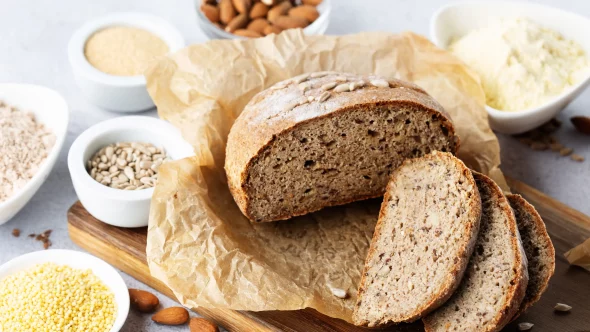
Almond flour
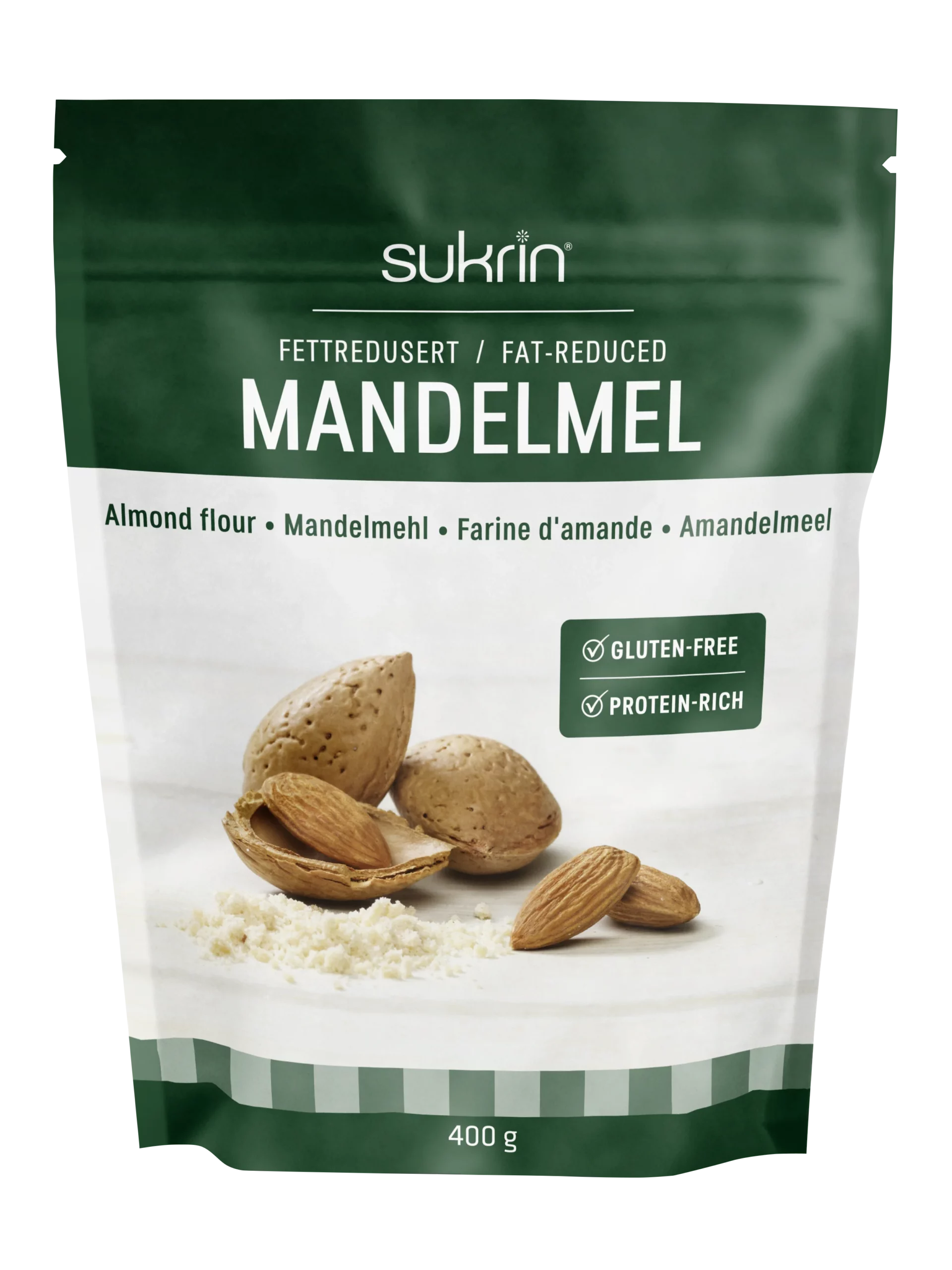
Weight: 1 dl weighs about 45 g
Special attributes: 51% protein. High content of magnesium, B vitamins and zinc.
Use: You can replace part of the flour content in any recipe with Almond Flour, which will increase the protein contents. In yeast doughs, you can substitute 10-20% of wheat flour for Almond Flour – be sure to increase the liquids with about 5-10%, too. You can also use Almond Flour as a protein supplement in smoothies, porridge, and similar.
Note: If you use a substantial amount of Almond Flour in your baking, you may notice a slight flavour of marzipan.
Tip: If you mix 90 grams of Almond Flour with 50 grams of SukrinMelis and two egg whites, you get a sugar-free and incredibly low-calorie marzipan.
Below are the contents of a selection of vitamins and minerals found in Almond Flour, compared to their values in wheat flour, both wholegrain and fine:
The columns indicate how much of the daily requirement 100 g of flour meets.
Sesame flour
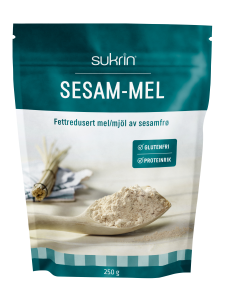
Weight: 1 dl weighs about 35 g
Special attributes: Neutral flavour that goes well in most dishes and baked goods. Only 6% carbohydrates – and a full 46% of protein. High in magnesium, iron, and zinc.
Use: Sesame flour has a neutral, mild, and nutlike aroma. It’s particularly well-suited for cookies, cakes, bread, pizza, and similar. In yeast doughs, you can substitute 10-20% of wheat flour for Sesame Flour – remember to increase the liquids with 5-10% when you do. Sesame Flour is used in the same way as Almond Flour, and is a particularly good alternative to it. Sesame Flour is also well-suited for hummus and crusts.
Note: 100 grams of Sesame Flour contains 810 mg of magnesium (231% of the recommended daily intake), 390 mg calcium (49% of the recommended daily intake), 12 mg of zinc (133% of the recommended intake), and 10 mg of iron (110% of the recommended daily intake).
Tip: Sesame Flour mixed with cocoa powder makes for a particularly good combination in baked goods.
Oat fibre

Weight: 1 dl weighs about 22 g
Special attributes: Pure fibre that contains zero carbohydrates – while maintaining a white, fine, and airy consistency.
Use: Replace 10% of the flour you use with Oat Fibre to increase fibre contents and reduce carbohydrates. The flour is neutrally flavoured, and has no altering effect on the finished dish. You can also add 1/2 – 1 teaspoon of Oat Fibre to yoghurt, smoothies etc.
Note: Oat Fibre attracts a lot of liquid, and you’ll need to add extra liquids to your recipe until you reach the desired consistency.
Tip: Oat Fibre is highly voluminous. When you substitute other flours for Oat Fibre, substitute volume instead of weight. For example, 2 dl of flour with 2 dl of Oat Fibre.
Coconut flour
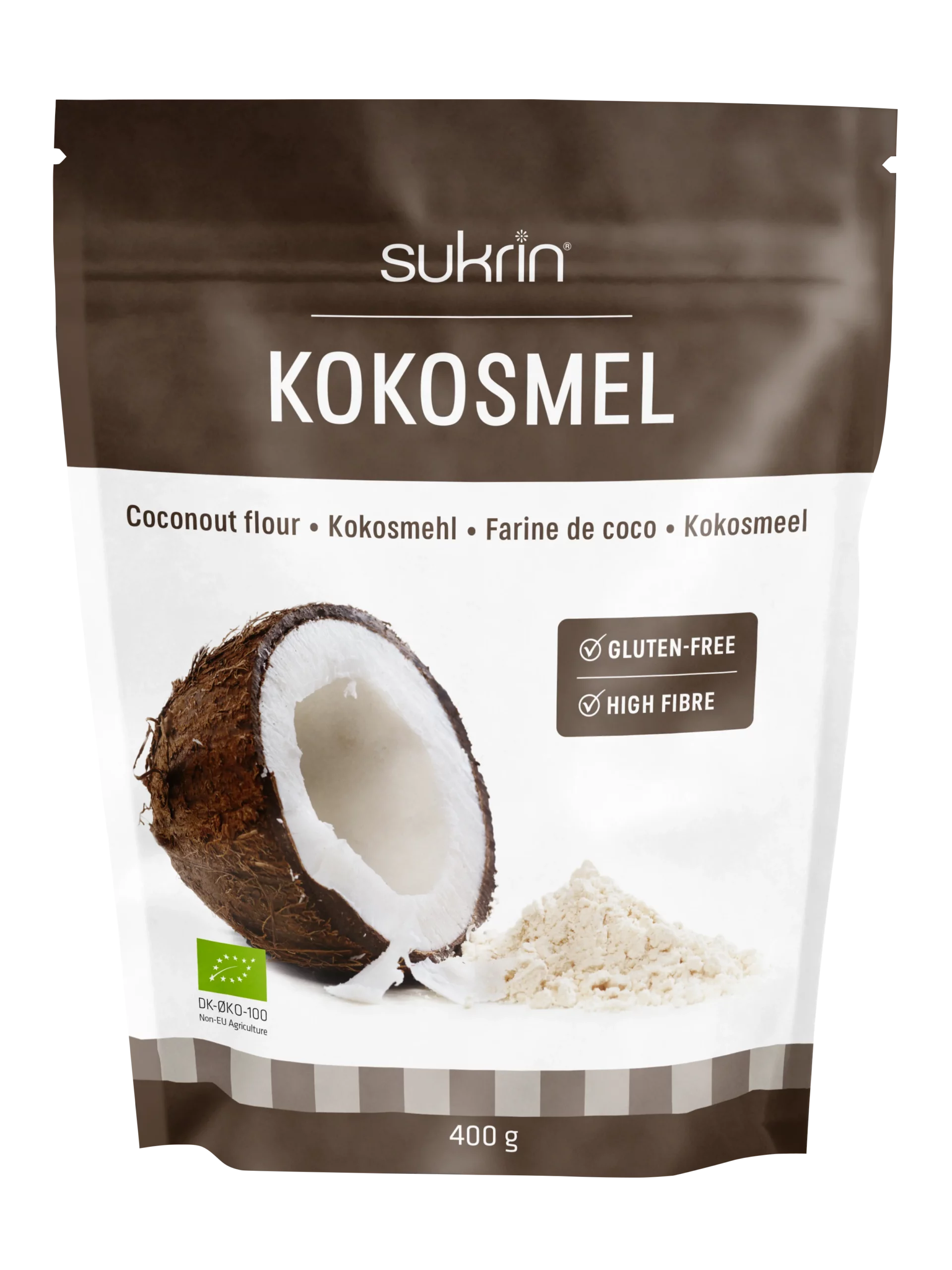
Weight: 1 dl weighs about 45 g
Special attributes: Sweet flavour, which means you can reduce other sweeteners when you use Coconut Flour. Contains a full 40% of fibre.
Use: Replace up to 25% of the wheat flour in traditional baked goods with Coconut Flour for a serious carb reduction, and a solid fibre supplement. You can substitute other gluten-free flours for Coconut Flour, too. You can replace up to 100% of the flour in these cases, although we recommend you use Coconut Flour in combination with other flour types for the best possible result. Coconut Flour can also be used to increase the fibre contents in smoothies, porridge, and similar.
Note: Coconut Flour has a distinct coconut aroma that’ll come through in cooking and baking. Since Coconut Flour is particularly high in fibre, it attracts more liquid than most other flours. Because of this, you can reduce the amount of Coconut Flour to about ⅓ of other flour measurements. You may need to add some extra liquids, too – add in slowly until you reach the desired consistency. We recommend that you add an extra egg in baked goods where you’re using a large amount of Coconut Flour. Add one egg per 30 grams of Coconut Flour.
Tip: Coconut flour is often used in combination with protein powder in baked goods; the two ingredients compliment each other particularly well where nutritional content is concerned.
FiberFin
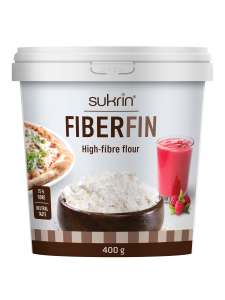
Weight: 1 dl weighs about 55 g
Special attributes: White, fine flour that contains a particularly beneficial fibre derived from resistant starch. FiberFin is a soluble fibre with prebiotic properties. It increases growth and activity of the beneficial gut bacteria, which aids in fighting harmful bacteria in your gut flora.
Use: Replace 10% of the flour you’re using with FiberFin, and your baked goods will contain more fibre than whole grain bread, while maintaining a light and airy consistency. You can also add FiberFin to smoothies, porridge, and similar.
Note: FiberFin is a fibre supplement intended for use with other flours. 10% is enough to make your baked goods sufficiently high in fibre.
Tip: Use FiberFin as a dietary supplement by mixing it in with milk/juice, or sprinkling it over your oatmeal or breakfast cereals.
Finely ground almonds
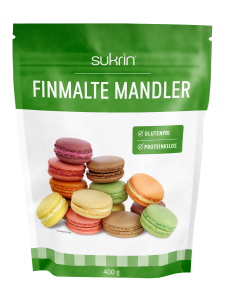
Weight: 1 dl weighs about 38 g
Special attributes: Blanched and ground almonds. A product that makes it easier to use almonds in baking and cooking, with half the prep work done for you.
Use: Finely ground almonds are perfect for making marzipan, macaroons, biscotti, confectionary cakes, and other sweets and pastries. It’s also particularly well-suited for crusts and gratins.
Note: Finely ground almonds will give a compact and juicy consistency in baked goods. If you want a lighter texture, opt for Almond Flour instead.
Tip: Mix 180 grams of Finely ground almonds with 50 grams of SukrinMelis and 2 egg whites, and enjoy a deliciously sugar-free marzipan.